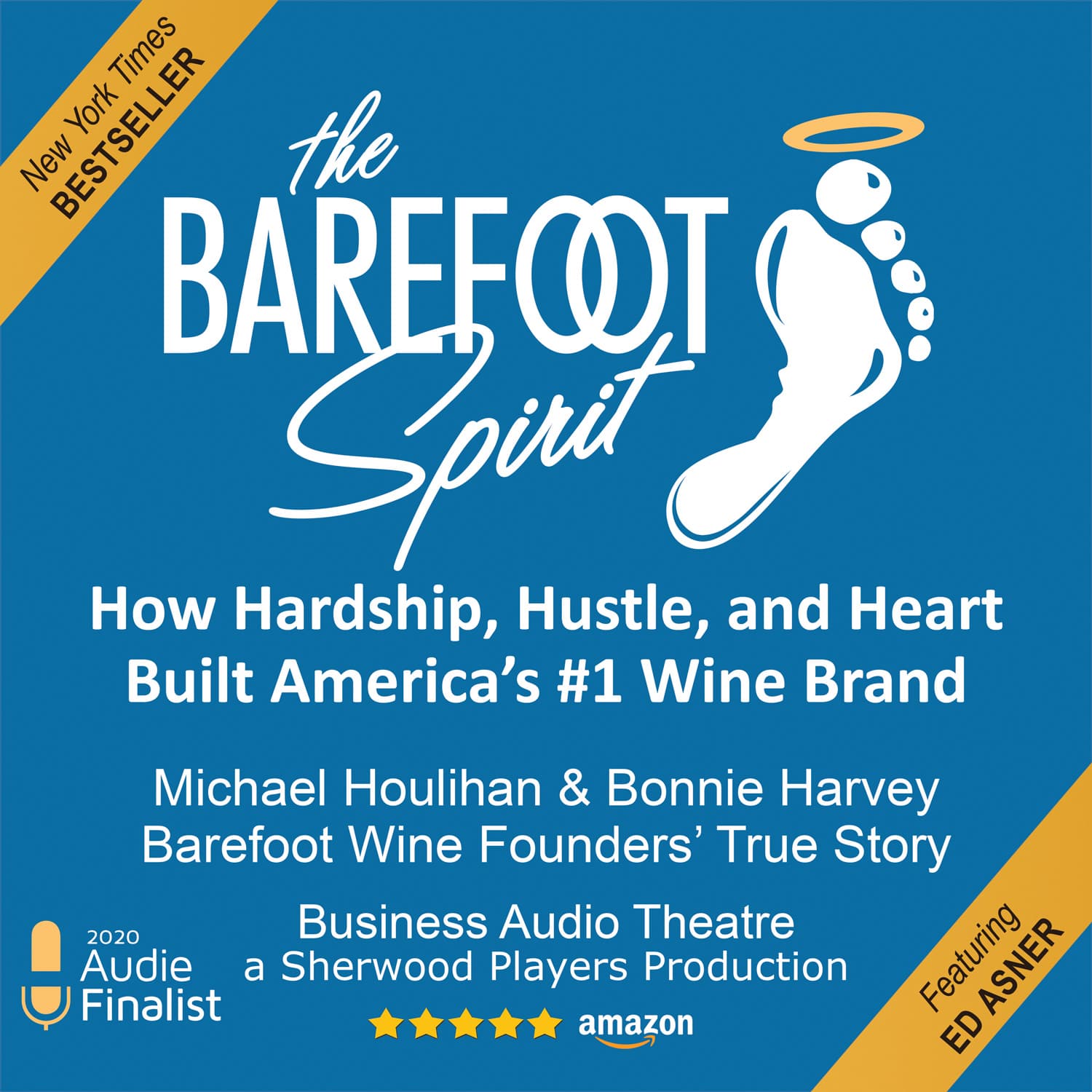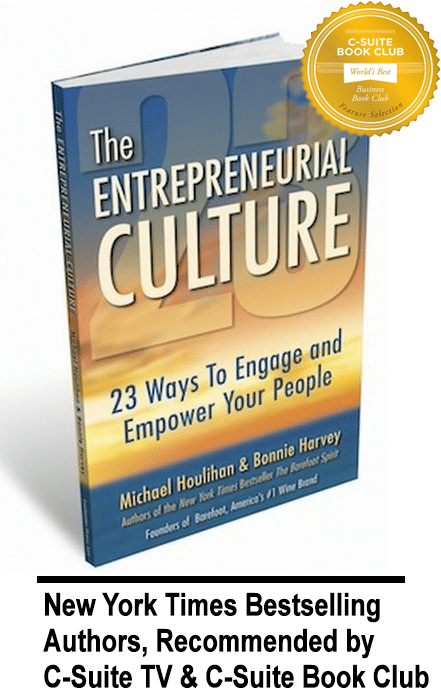No budget for advertising? Maybe you’re better off.
You have a great product that nobody’s buying because they’ve never heard of it. Without sales, you don’t have the money to advertise. Without advertising, you can’t build sales.
It’s a familiar conundrum, but there might be a good solution: Instead of advertising, give your product away to support worthy causes and build brand loyalty. That discovery helped Barefoot Cellars go from a tiny company in a garage to an international wine brand selling 600,000 cases a year–without placing a single ad.
It came about by accident, recalls Michael Houlihan, Barefoot’s co-founder and co-author of The Barefoot Spirit. “The first thing we found out was that when you have an unknown product, many stores won’t even carry it because there’s limited shelf space. There are stores that will stock you if you commit to $100,000 of advertising because they figure that will make the brand well enough known,” Houlihan says.
But the young company didn’t have that kind of money. “We were at the precipice of despair,” Houlihan recalls. “Out of left field, we got a call from a nonprofit in San Francisco’s Chinatown.” The caller was trying to raise money for playground equipment for a children’s park. He assumed Barefoot was a big winemaker with plenty of money. Would they please help out?
“I thought, Do you have the right number?” Houlihan says. “We’re in enough trouble as it is!” He told the caller he had no funds to spare, but that the company had wine it could donate for its fundraiser. Perhaps the wine would loosen donors up and they would write bigger checks. Or perhaps the group could auction the wine to raise cash.
Figuring they were onto something, Barefoot next selected a tony San Francisco neighborhood and went looking for community-based efforts. People there were trying to clean up a stream, so this time Barefoot offered not only wine but also staff to help set up and tear down at the fundraising event. They also asked if they could speak to attendees and tell them a bit about the wine they would be drinking. This time, the results were even more impressive.
From then on, supporting nonprofits became Barefoot’s national strategy, and every time the company entered a new market, it would hire a local “Barefooter” to represent the brand for sales and distribution and also find appropriate nonprofits to support. The strategy has worked beautifully, Houlihan says.
“The test [from retailers] usually goes like this: ‘We’ll try you out in our stores, and if you don’t sell 300 cases in 180 days, you’ll be discontinued and never be in our stores again.’ We passed those tests in markets that didn’t know us at all, and the only possible explanation was our support for these local nonprofits,” Houlihan says. Sales continued to grow and Barefoot Cellars was acquired by E&J Gallo in 2005.
Want to make donation marketing work for you? Here’s Houlihan’s advice:
1. Don’t confuse it with cause marketing.
Cause marketing, in which brands publicize or advertise their support of popular causes as a way to increase sales, is a whole other proposition–usually a much pricier one. “You’re buying a sponsorship to show what a great company you are,” Houlihan says. “They sell those sponsorships year after year, and you don’t get the same kind of loyalty. We weren’t going after the general public with the fact that we were supporting a group–we were working with the group in the hopes that its members would have a social reason to buy our product.”
2. Get creative with your offerings.
Beyond just giving the group your product (or cash) what else can you do to help? In addition to offering setup and teardown assistance, Barefoot helped some causes by hanging tags on its bottles asking for donations. “Imagine the chutzpah!” Houlihan says. “If you buy our wine we’ll turn around and ask you for a donation.” But the tactic proved an effective way to support some of the causes Barefoot cared about.
3. Make it a two-way street.
“It’s not a giveaway,” Houlihan says. For every donation you make to a nonprofit, you can request something in return. “Would you be willing to announce a thank you from your podium? Thank us in your newsletter? Let one of us speak at your event to tell people about the wine they’re drinking? Put a list down by each placement telling people where the product can be purchased? These are all easy things for a nonprofit to do.”
4. Find causes that fit your product.
For Barefoot Cellars, that often led to conservation efforts. For instance, it supported the Surfrider Foundation’s Blue Water Task Force, which tests ocean water to try and identify the source of pollutants. Barefoot Cellars created a bottle tag for the effort showing toes hanging off a surfboard and urging purchasers to “Hang 10 for clean water.”
“We’re Barefoot,” Houlihan says. “You wouldn’t want to step on a piece of glass on the beach or put your bare foot into polluted water.” At the same time, he noted, many of the company’s customers were mothers of kids who spent much of their time in the ocean. “They might say, ‘Wow, I didn’t realize the Surfrider Foundation was the only one testing the water–I thought the government was doing it,” he says.
5. Don’t count out political causes.
Many companies don’t like to get mixed up in politics, but Houlihan says it can be an effective tactic if you connect with a cause that aligns with your beliefs. For Barefoot, one of those causes was LGBT (Lesbian, Gay, Bisexual, Transgender). “We got involved with them in the 1990s, when they were marginalized,” he says. “We gained a very loyal following because we came out for their rights at a time when it wasn’t mainstream.”
6. Don’t expect to set it and forget it.
Marketing-by-donation needs to be managed on an ongoing basis just like any other form of marketing, Houlihan says: “Someone might call and say, ‘I’m the new executive director of this nonprofit, and you must support us with a $50,000 donation if you want to continue being our sponsor.’ I don’t blame them–they need to raise money and many of the large corporations do help nonprofits with big donations. Small businesses can’t afford those sponsorships, though.” That means you have to constantly be on the lookout for other nonprofits you might support.
7. Don’t spoil it by buying an ad.
“Ironically, we got to the point where we could afford advertising and we decided not to do it,” Houlihan says. Why ever not? “We didn’t want to stop the flow of word-of-mouth,” he explains. “It’s like me telling you about a great pizza place you never could have found any other way. But if I see a big sign for Joe’s Pizza, then I’m not going to say anything because there’s another way you could have found out. It’s no longer so special.”
After thinking about it, Barefoot’s founders decided it was their brand’s promise to spread the word through nonprofits. “We decided to keep that promise,” Houlihan says.
Who We Are

Michael Houlihan and Bonnie Harvey co-authored the New York Times bestselling business book, The Barefoot Spirit: How Hardship, Hustle, and Heart Built America’s #1 Wine Brand. The book has been selected as recommended reading in the CEO Library for CEO Forum, the C-Suite Book Club, and numerous university classes on business and entrepreneurship. It chronicles their humble beginnings from the laundry room of a rented Sonoma County farmhouse to the board room of E&J Gallo, who ultimately acquired their brand and engaged them as brand consultants. Barefoot is now the world’s largest wine brand.
Beginning with virtually no money and no wine industry experience, they employed innovative ideas to overcome obstacles, create new markets and forge strategic alliances. They pioneered Worthy Cause Marketing and performance-based compensation. They built an internationally bestselling brand and received their industry’s “Hot Brand” award for several consecutive years.
They offer their Guiding Principles for Success (GPS) to help entrepreneurs become successful. Their book, The Entrepreneurial Culture: 23 Ways To Engage and Empower Your People, helps corporations maximize the value of their human resources.
Currently they travel the world leading workshops, trainings, & keynoting at business schools, corporations, conferences. They are regular media guests and contributors to international publications and professional journals. They are C-Suite Network Advisors & Contributing Editors. Visit their popular brand building site at www.consumerbrandbuilders.com.
To make inquiries for keynote speaking, trainings or consulting, please contact sales@thebarefootspirit.com.







